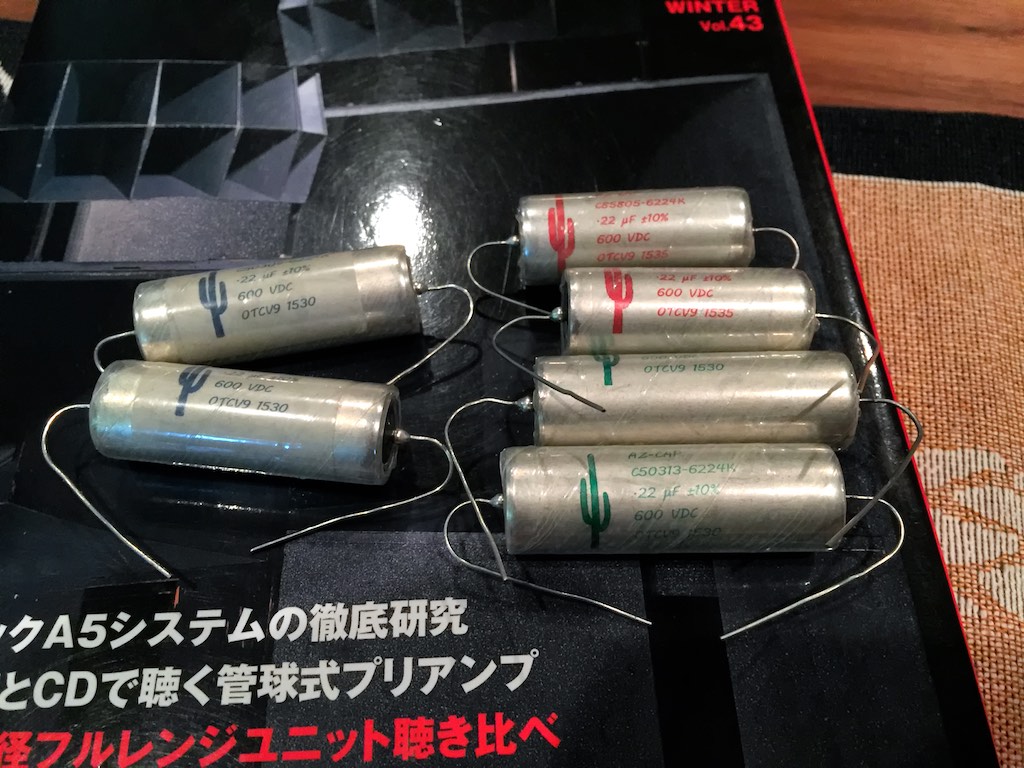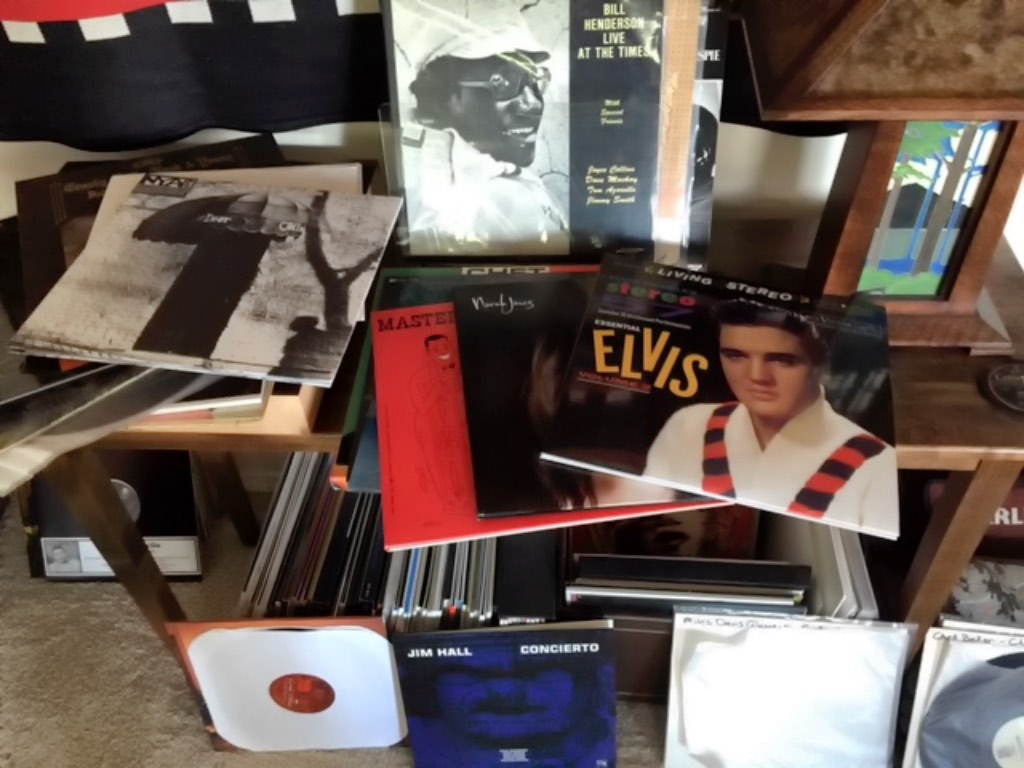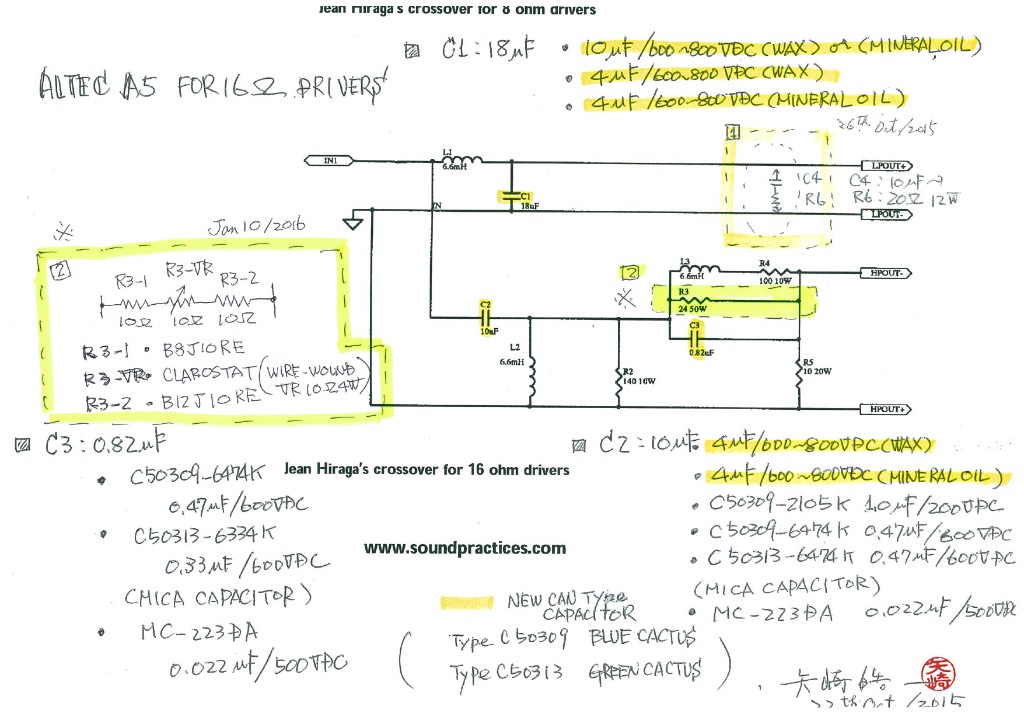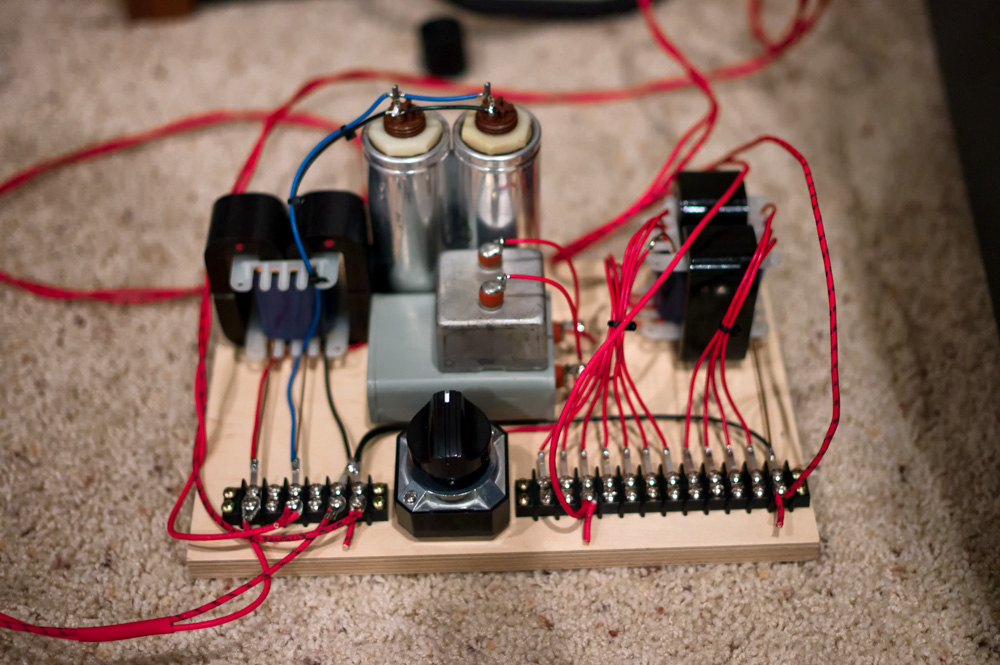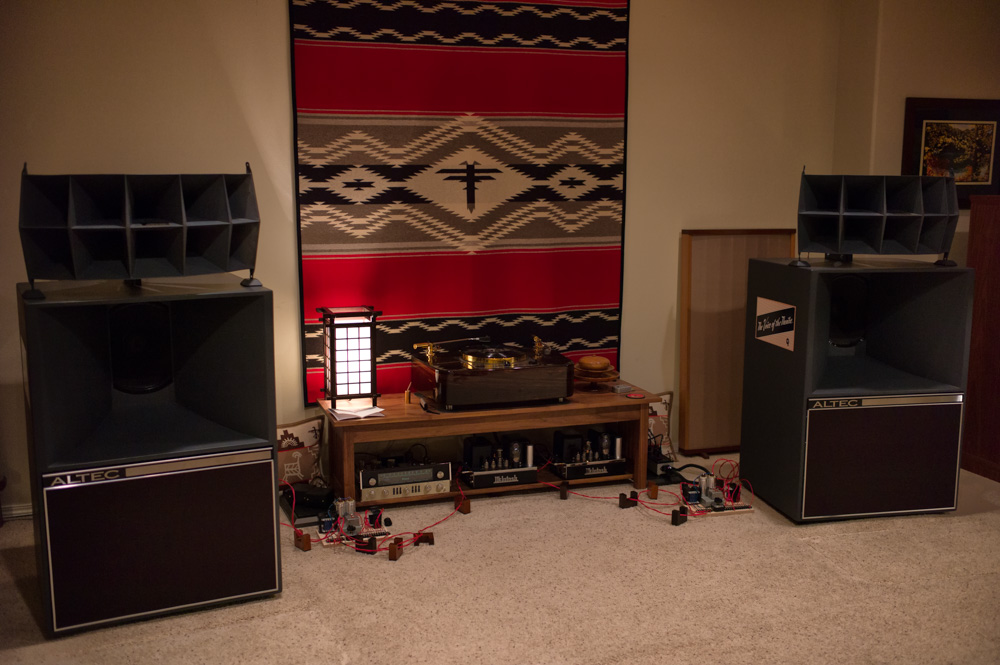Ron-san and I got together today to celebrate the joys of audio & music and to listen to the latest iteration of our Real Sound Adventure with the vintage McIntosh MX110 tuner-preamplifiers.
To complement our listening adventures, we had a couple of superb bottles of regional wines to sample, a 2013 Walla Walla Vintners Cabernet Sauvignon, and a 2013 Anelare Nonna Viola, along with an antipasto tray with lots of goodies, and some delicious Rouge Creamery smoked blue cheese, and some Vermont cave aged cheddar from the Cellars at Jasper Hill, that made our taste buds explode!
All very recommended!
Our friend and reader, M3, didn't know it, but his comment about 'less is more' for the MX110 in my last post was truly prophetic, but maybe not in the way M3 had intended. I wasn't ready to spill the beans at the time M3 made his comment, but now it is time!
I had come upon a recommendable combination of 'hot rod' mods for the MX11oZ tuner-preamplifier that I described in my last post and was ready to close the book on the MX110 adventure.
Yesterday, I decided in a sudden bit of savant soldering, that I wanted to try one last modification to the MX110's power supply.
You see, I've found the MX110's power supply to be incredibly sensitive to any modifications, and I decided I wanted to retry listening to the stock power supply without any of the coupling capacitors we added during our adventure.
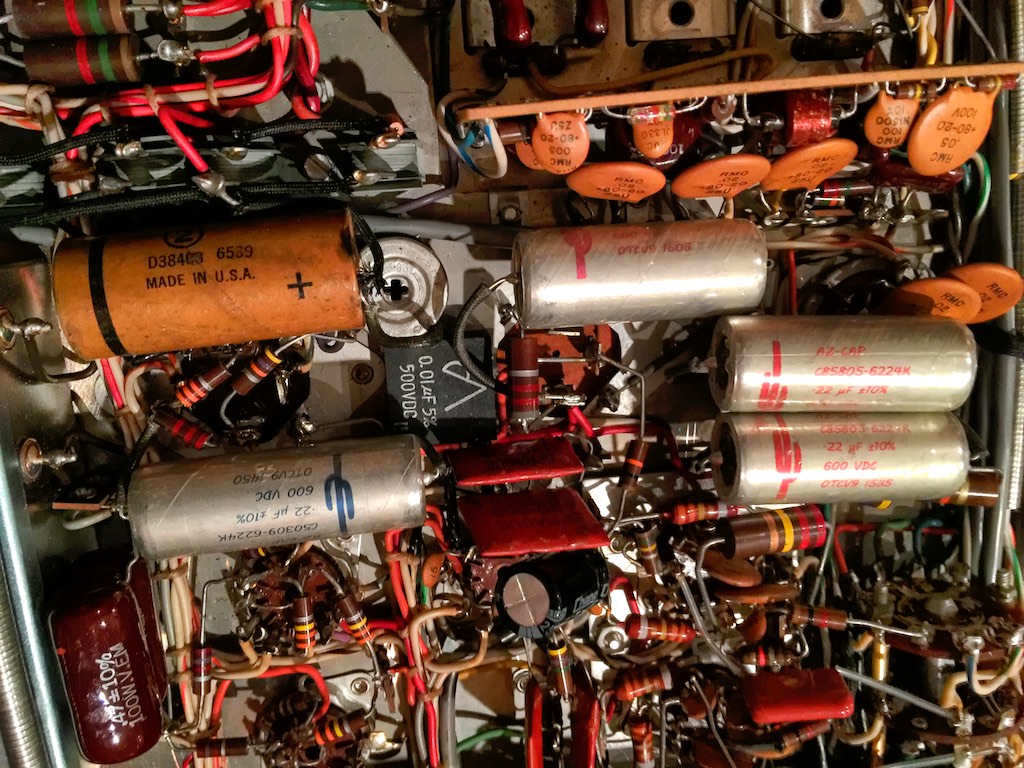
Red Cactus plus Blue Cactus, Red Cactus, and SPEC Ruby-Mica coupling caps in the power supply of my MX110.
So out came my soldering iron, and out came the bypass caps we added to the power supply in Modification C: the SPEC Ruby-Mica bypass capacitor (MC103DA, 0.01μF / 500VDC) added at C1, and the 0.22uF Red & Blue Cactus Arizona Capacitors added at C2 & C3.
Guess what? Removing the bypass capacitors was a massive improvement in musicality and sonic performance for MX110! After I listened to my MX110 with its pair of Red Cactus 0.22uF caps in Modification B, and with the Modification C bypass caps removed, I was flabbergasted, there was just no comparison!
So M3, my friend, you were exactly right, sometimes less is more. Buoyed by my success with my MX110 and its Red Cactus caps sans Modification C, I also removed Modification C from Leo's and George's MX110s.
I was rewarded with similar performance improvements with both Leo's and George's MX110s, and both sounded fantastic.
So get this: Now for the first time I was able to really hear the full tonal palette of the pairs of Arizona Capacitors Blue Cactus, Green Cactus, and Red Cactus 0.22uF in Modification B, and was really able to appreciate how good they really are.
As you can imagine, I was excited by my preliminary results, and I was really looking forward to having Ron & Leo hear the fruits of my labors, so I invited Ron & Leo over, and Ron was able to make it, but Leo was up to his elbows in surgery for the day, so he couldn't make it.
So Ron and I listened to a bunch of albums to get a feel for the pairs of Blue Cactus, Green Cactus, and Red Cactus 0.22uF that were installed in the three MX110s in Modification B, and for the first time I think we really heard what the Arizona Capacitors were truly capable of.
Ron and I listened to Lucinda Williams' World Without Tears, Billie Holiday's Body and Soul (mono), Jefferson Airplane's Surrealistic Pillow (mono), Led Zeppelin IV (Stairway to Heaven), Bill Henderson's Live At The Times (Send In The Clowns), Getz/Gilberto, Neil Young's Live At The Cellar Door, Crosby, Stills, Nash, and Young's Deja Vu, Elvis Presley's Stereo 57, and Norah Jones' Come Away With Me, to get a feel for what the for Blue Cactus, Green Cactus, and Red Cactus 0.22uF in Modification B were doing musically & sonically.
Yazaki-san characterized the sound of the Red Cactus, Blue Cactus, and Green Cactus Arizona Capacitors like this: the Red Cactus has a “genuine and pure sound, full of fascinations & passions like beautiful art”; the Blue Cactus has a “gorgeous vintage American tone color, open and natural, everyone likes it who hears it”; and the Green Cactus has a “noble European timbre, smoother and more open air character”.
That's pretty much what Ron and I heard from them as well.
As Ron and I listened to the various albums during our listening session we were very impressed with the emotive ability of the Red Cactus Arizona Capacitors. The Red Cactus have a sort of 'glamour glow' about them that is very seductive, particularly in the way they present the highs & lows. They give the music a glamorous Hollywood glow to them that makes music utterly captivating, sensuous, and seductive. The Red Cactus are all about the emotion of music, and they are very compelling to listen to. The Red Cactus is that girlfriend of yours that likes to dress up in a revealing sequined dress to let all her ample endowments tease you, while she struts along on high-heels, with her hair flowing down to the middle of her back as it flutters in the breeze. Her perfume is perfection, her eyes sparkle with mirth, and she whispers seductively in your ear in an erotic tease that hints at the evening to come.
The Green Cactus Arizona Capacitors are very musically appealing, and they have a more rounded and smoother 'organic' style of presentation that is very appealing. They're a little softer on top, and less forward, compared to the Red Cactus, and a little less dramatic in the way they handle the bass region, but the mid-range is gorgeous, natural, and they are relatively forgiving of lesser recordings. The Green Cactus are the cute girl next door in her jeans & t-shirt, with her attractive natural looks, and easy to be with personality. She's your friend and likes all your friends (your LPs), and she wants to make your life better by being part of it. She's in it for the long haul, and her wholesomeness, devotion, and purity come through
The Blue Cactus Arizona Capacitors in many ways sound like a blend of the Red Cactus & Green Cactus Arizona Capacitors, which is actually a really nice place to be. They're relatively warm & musical, but they have more sparkle on top than the Green Cactus, more beat in the bass, and a more fleshed out midrange. This is the girl next door, but with hidden depths, a skimpy thong under those jeans, and nothing under that rather sheer t-shirt, a touch of blood-red lipstick on her lips that somehow managed to get on your collar as she strutted by your side through the night in her heels. She's at home as much at a rock concert as she is at a Chicago blues club, or a table at a jazz bar, or a fine restaurant.
Somewhat ironically, removing Modification C allowed the Red Cactus, Blue Cactus, and Green Cactus Arizona Capacitors allowed us to hear them at their considerable best, and with that serendipity in play, we achieved our original goal of finding a combination of modifications that showcased each of these Arizona Capacitors at their considerable best, and they are really, really good.
All of the Arizona Capacitors allow a lot of detail to come through, more than you're used to hearing from a stock MX110. They all have a high degree of natural sounding clarity. They each have attributes about them that are very desirable, as described above, and Ron & I were lamenting that we couldn't figure out a way to add all three pairs to the MX110 and then change between them with the flip of a switch as the mood struck us.
So now my recommendation for modifying the MX110 has changed. Here's what you should do for some fun: get a pair each of 0.22uF Red Cactus, Blue Cactus, and Green Cactus Arizona Capacitors to try in Modification B and hear what happens. I predict it will be a massive education for you just as it was for me. Forget resistors for now, just stick with the stock Allen Bradley resistors on the phono inputs. If you're feeling really adventurous it's ok to add a pair of 56K Ohm Tepro RA resistors to one of your two phono inputs in place of the stock Allen Bradley's.
So the MX110 Adventure really turned out to be much simpler than we anticipated to get a significant improvement. The MX110 sounds much more musical and involving without the coupling caps we tried in Modification C, so really all you have to do is Modification B (first stage cathode follower of the high level input) to get really nice results with the MX110.
Hot-rodding the MX110 turns out to be as easy as replacing two key pairs of 0.1uF capacitors at C93 & C95 and C94 & C96 with a pair of 0.22 uF Arizona Capacitors. That's it, and the results are astonishing.
The original McIntosh MX110's design deserves tons of respect, they did a superb job on it, and it's bloody hard to improve upon!
I'll keep fiddling with my MX110, and if we come up with some clever ideas to improve the sound you will be the first to know, but for now we're done and we're moving on.
Many thanks to Yazaki-san and Ron-san for such a wonderful experience in learning about modifying & voicing the vintage McIntosh MX110, it is one of the most rewarding audio experiences I've ever had, and I learned a ton! Thank you!
Up Next: The Vintage Altec-Lansing A5 Voice of the Theatre loudspeaker project!
6 months ago the cool guys at Arizona Capacitors asked if they could provide the six 6.6mH inductors we needed to build some Hiraga-inspired, Yazaki-san modified, custom crossovers for the A5 Voice of the Theatre loudspeaker project. They had lots of good ideas for inductors, so of course I said, "Yes!"
But how do I say this ... well ... for whatever reason, they never delivered, and the project's been delayed 6 months now waiting for something that never came to be.
This week I'm going to order some inductors from the good folks at Solen Electronique (Yazaki-san's original recommendation) to get the A5 Voice of the Theatre project back on track, and when I get the inductors I'll start breadboarding the crossovers in earnest, and I'll give you the full story just as I did with the Duelund-WRSE crossovers project.
This A5 Voice of the Theatre project is going to be a fun & exciting and we're finally moving forward!
In the meantime I will regale you with adventures about using an original pair Altec-Lansing N-500-D 'dividing networks' that Gary Fischer sent me for the A5 VOTTs, which happen to be the same model that are used in my deliciously musical Stokowski A7 VOTTs.
Will the N-500-D 'dividing networks' sound as good with the A5 VOTTs as they do the Stokowski A7 VOTTs?
We'll find out!
I'll have more to say about Werner's autoformer based crossovers for the A5 as well.
Thanks for stopping by, and from my home to yours, may the music playing make you happy!






